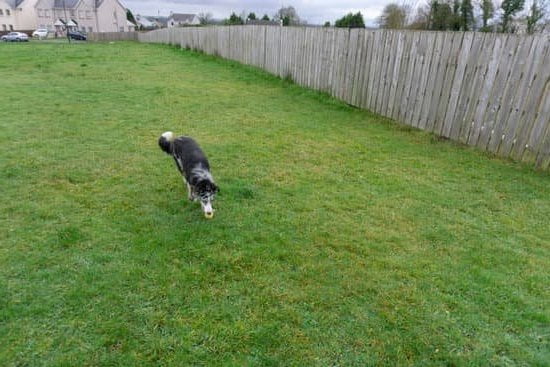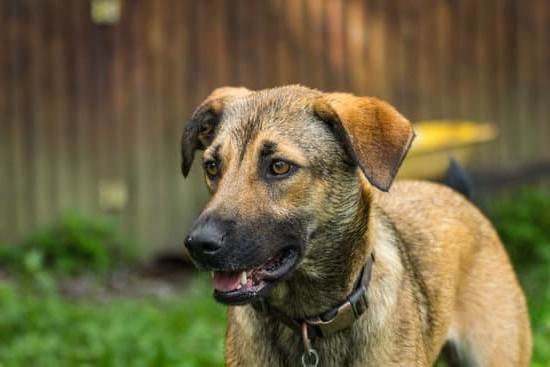Training your dog to urinate outside is a crucial aspect of responsible pet ownership. Not only does it help maintain a clean and hygienic home environment, but it also fosters good behavior in your furry companion. Understanding why dogs may urinate indoors and how to effectively train them to go outside can make the process smoother and more successful.
Dogs may urinate indoors due to a variety of reasons, such as lack of proper training, anxiety, or medical issues. By establishing a routine for your dog’s potty training and choosing the right location for them to go outside, you can set the foundation for success. Positive reinforcement plays a vital role in encouraging desired behavior, as rewarding your dog for urinating outside reinforces the desired behavior.
Consistency is key when it comes to training your dog to urinate outside. By maintaining a routine and consistently using positive reinforcement, you can help your dog learn where and when it is appropriate to relieve themselves. While setbacks and accidents may occur during the training process, knowing how to handle them with patience and understanding can keep you on track towards success in potty training your beloved pet.
Understanding Your Dog’s Behavior
Dogs urinating indoors can be frustrating for pet owners, but it’s important to understand why this behavior occurs in the first place. There are several reasons why dogs may urinate indoors, including medical issues, inadequate potty training, marking territory, or anxiety. Some dogs may struggle with potty training due to a lack of understanding or inconsistent training methods. It’s crucial for pet owners to be patient and empathetic towards their furry companions during the training process.
To successfully train a dog to urinate outside, pet owners must first identify the underlying cause of their dog’s indoor accidents. Consulting with a veterinarian can help rule out any potential medical issues that may be contributing to the problem.
Additionally, observing your dog’s behavior and patterns can provide valuable insights into why they may be having accidents inside the house. By understanding the root cause of indoor urination, pet owners can tailor their training approach to address these specific issues effectively.
In addition to identifying the reasons behind indoor urination, creating a consistent routine is essential for successful potty training. Dogs thrive on routine and structure, so establishing set times for bathroom breaks can help prevent accidents indoors.
Positive reinforcement plays a significant role in this process – rewarding your dog with treats and praise every time they go potty outside can motivate them to continue exhibiting this desired behavior. With patience, consistency, and understanding of your dog’s behavior, you can effectively train your furry friend to urinate outside and minimize indoor accidents.
| Key Points | Description |
|---|---|
| Identifying Causes | Understanding why dogs urinate indoors |
| Consistent Routine | The importance of establishing set times for bathroom breaks |
| Positive Reinforcement | Rewarding your dog for going potty outside |
Establishing a Routine
Consistency in your training approach is essential for effectively teaching your dog where to urinate. When you take your dog outside to their designated potty area, use a specific command or cue to communicate what you expect them to do. For example, saying “go potty” each time they eliminate reinforces the connection between the command and the desired behavior. Over time, your dog will understand what is expected of them when they hear this cue.
In addition to establishing a routine and using cues, it’s important to be patient and understanding during the training process. Every dog learns at their own pace, so it’s normal to experience setbacks along the way. If accidents occur indoors, avoid punishment and instead focus on redirecting your dog outside immediately. With consistent training methods and positive reinforcement, your dog will eventually learn how to properly urinate outside.
| Training Tip | Benefits |
|---|---|
| Establish a routine | Helps dogs understand when and where they should go |
| Use specific cues | Reinforces the connection between commands and behaviors |
| Show patience | Avoid punishment and focus on positive reinforcement |
Choosing the Right Location
When it comes to training your dog to urinate outside, one crucial aspect is choosing the right location for them to go. Finding the perfect spot can make a significant difference in your dog’s potty training success. Here are some key points to consider when selecting the ideal location for your furry friend.
Understanding Your Dog’s Preferences
Dogs have preferences when it comes to where they eliminate, just like humans do. Some dogs may prefer grassy areas, while others may be more comfortable going on gravel or concrete. Pay attention to your dog’s behavior and see if they show a preference for a specific type of surface. By understanding what your dog likes, you can make it easier for them to transition to urinating outside.
Accessibility and Safety
Another important factor to consider when choosing a location for your dog to urinate outside is accessibility and safety. Make sure the spot you pick is easily accessible for both you and your pet, especially during unfavorable weather conditions. Additionally, ensure that the area is safe for your furry friend – away from any hazards or potential dangers.
Consistency and Routine
Consistency plays a vital role in successful potty training for dogs. Once you’ve identified the right location for your dog to go, stick with it consistently. Dogs thrive on routine, so taking them to the same spot every time will help reinforce the behavior of urinating outside.
By creating a reliable routine and sticking with it, you can effectively train your dog to develop this good habit. Remember, patience and consistency are key when teaching your dog where to relieve themselves outdoors.
Positive Reinforcement
When it comes to training your dog to urinate outside, positive reinforcement is a key aspect of the process. Dogs respond well to rewards and praise, so it’s important to make sure you are providing them with positive feedback when they exhibit the desired behavior.
One effective way to do this is by offering treats or verbal praise immediately after your dog goes potty outside. This helps your dog associate going outside with something positive, making them more likely to repeat the behavior in the future.
Another important aspect of positive reinforcement is timing. It’s crucial to reward your dog immediately after they have finished urinating outside, as dogs have a short attention span and may not understand if they are rewarded too long after the desired behavior. By providing immediate rewards, you are reinforcing the connection between going potty outside and receiving a treat or praise, which can help solidify the training process.
In addition to treats and praise, some dogs may also respond well to physical affection as a form of positive reinforcement. If your dog enjoys being petted or scratched behind the ears, this can be used as a reward for going potty outside.
Remember that every dog is different, so it’s important to pay attention to what motivates your specific pet and tailor your rewards accordingly. By consistently rewarding your dog for going potty outside, you can help them understand what is expected of them and establish good habits for the long term.
Consistency Is Key
Consistency plays a crucial role in successfully training your dog to urinate outside. When it comes to potty training, dogs thrive on routine and predictability. By establishing a consistent schedule for bathroom breaks, you can help your furry friend understand when and where they should go potty. Consistency also reinforces the behavior you want to encourage, making it easier for your dog to learn and remember the desired outcome.
In addition to maintaining a regular schedule, positive reinforcement is essential in the training process. Rewarding your dog with treats, praise, or playtime after they successfully urinate outside will help reinforce this behavior.
Dogs are more likely to repeat actions that result in positive outcomes, so by rewarding them for going potty outside, you are encouraging them to continue this behavior in the future. Consistent reinforcement of good behavior helps solidify the habit of going potty outside and strengthens the bond between you and your pet.
It’s important to remember that accidents may happen during the training process. It’s crucial to remain patient and avoid scolding or punishing your dog for accidents indoors.
Instead, focus on redirecting their behavior towards going outside by calmly cleaning up any messes and continuing with the training routine. By staying consistent with your approach and providing positive reinforcement, you can help your dog understand where they should go potty and set them up for success in their training journey.
Dealing With Accidents
Accidents are a common part of the training process when teaching your dog to urinate outside. It’s important to remain patient and understanding during setbacks, as they are normal and expected. Here are some effective strategies on how to handle accidents and keep moving forward with your potty training efforts:
- Stay calm and avoid punishment: When accidents happen, it’s crucial not to scold or punish your dog. This can create fear and confusion, making it harder for them to understand the desired behavior. Instead, focus on redirecting them outside when you catch them in the act.
- Clean up thoroughly: It’s essential to clean up any accidents promptly and thoroughly to eliminate any lingering scent that may attract your dog to go in the same spot again. Use enzyme-based cleaners specifically designed for pet accidents to ensure thorough removal.
- Reevaluate routine and supervision: Take a step back and assess if there have been any changes in your routine or if perhaps you’ve been letting your dog roam unsupervised for too long. Adjusting the schedule or increasing supervision can help prevent future accidents.
Remember that setbacks are a natural part of the training process, and consistency is key in helping your dog learn where it’s appropriate to urinate. By staying patient, positive, and proactive in addressing accidents, you can effectively guide your furry friend toward successful potty training.
- Consult a professional trainer: If you’re facing repeated challenges with potty training despite consistent efforts, consider seeking guidance from a professional dog trainer. They can provide personalized advice and techniques tailored to your specific situation.
- Utilize crate training: Crates can be valuable tools in potty training by creating a safe space for your dog when unsupervised. Dogs typically avoid soiling their living area, so using a crate can help prevent accidents indoors while also teaching bladder control.
- Address medical concerns: In some cases, frequent indoor urination may be due to underlying health issues such as urinary tract infections or bladder problems. If you suspect a medical cause for your dog’s accidents, consult with your veterinarian for proper diagnosis and treatment.
Tips for Success
Use a Verbal Cue and Schedule Regular Bathroom Breaks
One effective strategy to help your dog learn to urinate outside is by using a verbal cue consistently. Choose a specific command or phrase, such as “go potty” or “do your business,” that you will use every time you take your dog outside to eliminate. By associating this verbal cue with the act of urinating, your dog will start to understand what is expected of them.
In addition to using a verbal cue, it’s essential to establish a regular schedule for bathroom breaks. Dogs thrive on routine, so taking your furry friend out at the same times each day will help them anticipate when it’s time to go potty. Be sure to provide plenty of opportunities for your dog to eliminate outside after meals, playtime, and naps, as well as first thing in the morning and last thing at night.
Monitor Your Dog’s Behavior and Provide Plenty of Positive Reinforcement
Another important tip for successfully training your dog to urinate outside is to closely monitor their behavior indoors. Look for signs that your dog needs to go potty, such as sniffing around, circling, or pacing. When you notice these behaviors, immediately take your dog outside to their designated potty area.
It’s crucial to praise and reward your dog every time they successfully urinate outside. Use treats, verbal praise, and pets as positive reinforcement for good behavior. Dogs respond well to positive reinforcement, so be consistent in rewarding them for going potty in the right place. This will reinforce their understanding that eliminating outside is the desired behavior.
Seek Professional Help if Needed and Stay Patient Throughout the Training Process
If you’re struggling with training your dog to urinate outside despite using various strategies and techniques, don’t hesitate to seek professional help from a certified dog trainer or behaviorist. Sometimes dogs may have underlying issues that require expert guidance and support to address effectively.
Above all else, remember that patience is key when it comes to training your dog. Every pup learns at their own pace, so be patient and persistent in your efforts. Celebrate small victories along the way and stay consistent with your training approach. With time, dedication, and lots of love, your furry companion will eventually master the art of urinating outside like a pro.
Conclusion
In conclusion, training your dog to urinate outside is a crucial aspect of pet ownership that not only keeps your home clean but also promotes good behavior in your furry friend. By understanding the reasons why dogs may urinate indoors and establishing a consistent routine for potty training, you can set your dog up for success.
Choosing the right location for your dog to go potty, providing positive reinforcement, and maintaining consistency in your training approach are all key factors in helping your dog learn to go outside.
Remember that accidents may happen during the training process, but it’s important to stay patient and handle setbacks calmly. By dealing with accidents in a constructive manner and continuing to reinforce positive behavior, you can help your dog learn where it is appropriate to urinate. Additionally, incorporating some extra tips and strategies such as using verbal cues or crate training can further support your dog’s learning process.
In the end, celebrating your dog’s successes in potty training is essential to maintaining their progress and encouraging continued good behavior. Training a dog to urinate outside requires time, patience, and consistency, but with dedication and the right approach, you can successfully teach your furry companion where they should relieve themselves. Remember that every dog is different, so it’s important to tailor your training methods to suit their individual needs and personality.
Frequently Asked Questions
How Do I Get My Dog to Pee Outside My Yard?
To get your dog to pee outside of your yard, consistency is key. Take your dog out frequently, especially after meals or waking up. Use positive reinforcement when they pee outside and ignore accidents inside. Also, be patient and give plenty of praise when they do go outside.
How Long Does It Take to Train a Dog to Pee Outside?
The time it takes to train a dog to pee outside can vary depending on the dog’s age, breed, and previous training. Typically, it can take anywhere from a few weeks to a few months for a dog to learn to consistently go potty outside. Consistent training with positive reinforcement is essential for success.
Why Won’t My Dog Pee When I Take Him Outside?
There could be several reasons why your dog isn’t peeing when you take him outside. It could be due to fear or anxiety in new environments, distractions such as other animals or noises, medical issues like urinary tract infections, or simply lack of proper housetraining.
Observing your dog’s behavior closely and addressing any underlying issues can help resolve this problem.

Welcome to the blog! I am a professional dog trainer and have been working with dogs for many years. In this blog, I will be discussing various topics related to dog training, including tips, tricks, and advice. I hope you find this information helpful and informative. Thanks for reading!





